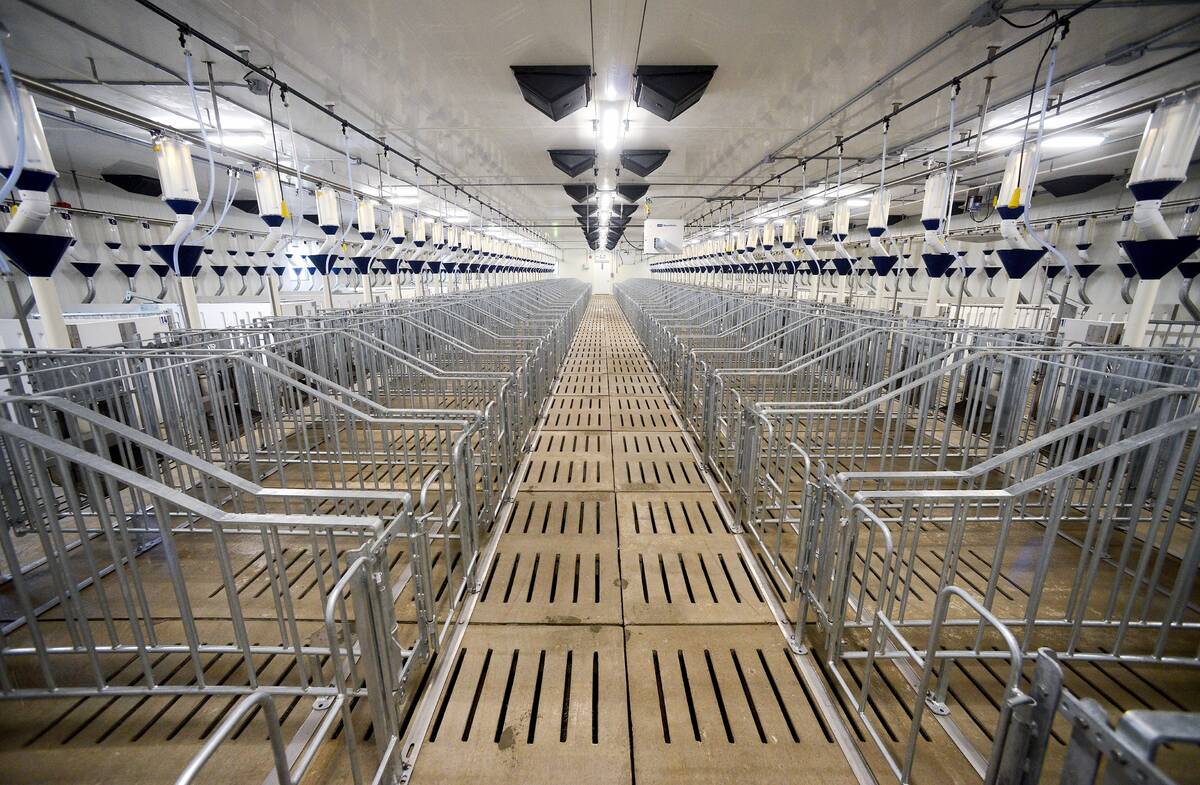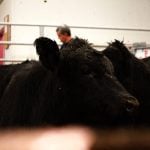The future of Canadian agriculture remains in flux as U.S. trade policies shift, with significant consequences for farmers, according to Tyler McCann, managing director of the Canadian Agri-Food Policy Institute.
“We know that the U.S. is trying to blow up the global trading system. We know that Canada is going to suffer a lot more than the United States,” McCann said, speaking during the 2025 spring advisory council meeting for Keystone Agricultural Producers (KAP) in late March.
WHY IT MATTERS:Tariffs and tariff threats have been flying between the U.S. and Canada for months.
Read Also

Real farm talk on switching to open sow housing
What actually worked for these Prairie pig farmers when it came time to swap gestation stalls in their barns for group sow housing? What were the results?
Canada’s agriculture and agri-food industry is deeply integrated with its southern neighbour, McCann noted.
“If you start with potash in Saskatchewan, that’s exported down to Iowa. Corn in Iowa is sent to Minnesota. There’s pigs from Manitoba that are also sent to Minnesota. In Minnesota, they use that Iowa corn grown with Canadian potash and Canadian piglets to raise hogs…those hogs are slaughtered in Minnesota. Some of that Minnesota pork goes to Ontario to feed Ontario consumers.”
Canada, meanwhile, is more dependent on U.S. markets than it has been in decades, he argued. There have been efforts to diversify trade into the Indo-Pacific, but they haven’t borne much fruit. Canada’s export growth can largely be pointed to increased trade with the U.S.
That makes recent U.S. tariffs even more alarming for agriculture. The U.S. administration’s approach, including a potential reciprocal tariff strategy, has created significant uncertainty, McCann said.
It’s been a drama-filled saga since U.S. President Donald Trump was elected last fall. There was an initial promise of 25 per cent blanket tariffs on Canadian and Mexican goods as soon as he officially got into office. That was followed by a series of delays and last-minute deals.
U.S. tariffs were briefly in place in early March, before a month-long exemption was announced for products under the Canada-U.S. Mexico Agreement. The U.S.’s 10 per cent tariffs on Canadian energy stayed in place, but duties against potash reduced to 10 per cent.

In mid-March, the U.S. stacked on separate 25 per cent tariffs against Canadian steel and aluminum.
Canadian retaliatory tariffs currently cover about $30 billion worth of U.S. goods, with threats of more if U.S. tariff threats aren’t rolled back.
The current exemption was set to run out April 2.
At the time of McCann’s presentation to KAP, it was unclear what the days after that expiration would hold, although McCann pointed to some signals from the Trump administration that the post-April 2 tariffs might be narrower than previously threatened.
“The president himself (has been) talking about (how) they’re going to give lots of breaks, and so it really does speak to the uncertainty of the world that we live in,” he said.
Chinese-imposed tariffs have also been impacting Canadian trade policies, muddying the waters even further, he added. Those tariffs, which now target canola meal and oil, peas, pork, and aquatic products, could have billions of dollars in consequences for Canadian agriculture.

CUSMA complications
Canadian exporters faced challenges even under the U.S. exemption, he noted
“None of the live hogs that we exported to the United States were USMCA compliant,” McCann said. “Largely, the most-favoured-nation (MFN) tariff that exports would pay was the same as the tariff in USMCA, (so) there was no benefit of going through the effort to kind of file the paperwork that you need to file to become USMCA compliant. But, if you go from an MFN tariff that was the same, often zero on something like live swine, to a 25 per cent tariff … all of a sudden, the tariff advantage changes.”
The uncertainty is also a poor tone to start looking at a looming CUSMA talks.
“We know that the renegotiation is coming. This is something that the president baked into the agreement,” he said. “I think, up until relatively recently, the Canadian government was saying, ‘We don’t expect this to be a renegotiation. We expect this just to be a review.’”
McCann the Canadian government, whichever party might win in next month’s federal election, will take a strategic approach in response to evolving trade threats.
“Ultimately, what all of this means is that it is really hard to figure out how you negotiate with the Americans, because you need to know what the other side of the negotiating table is asking for, and that’s pretty hard to tell these days,” he said.
















